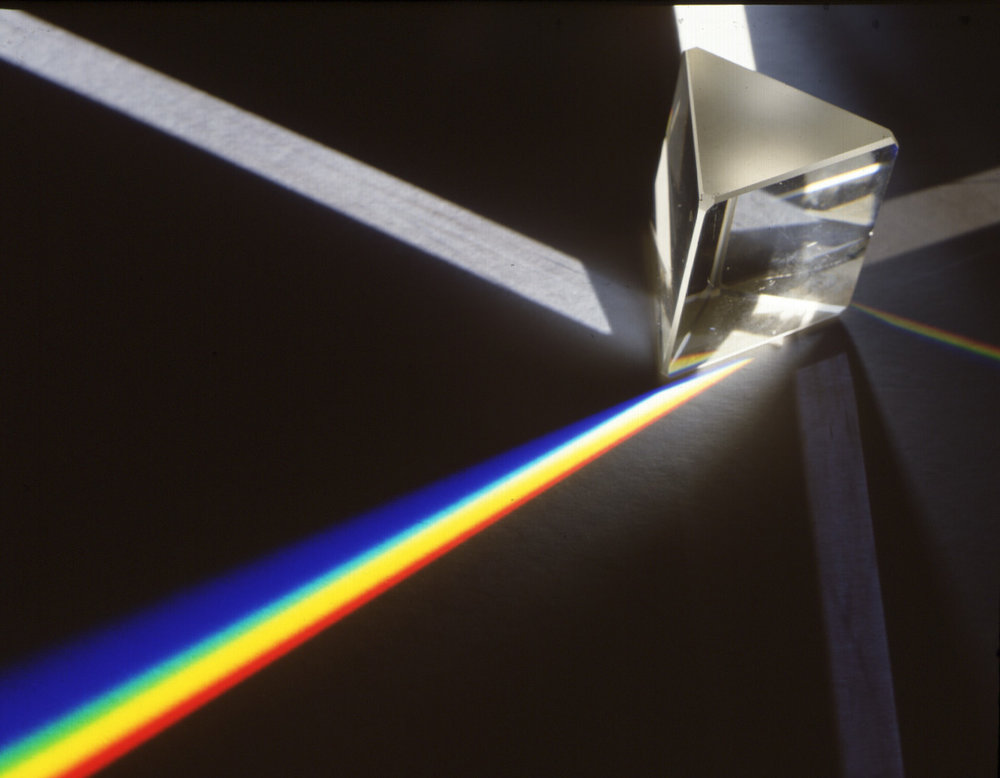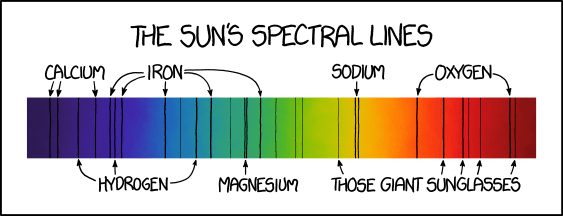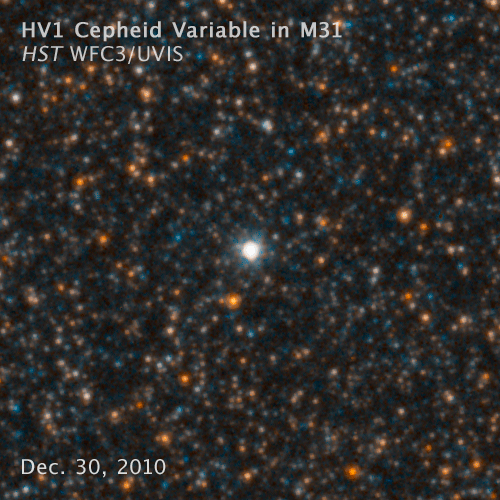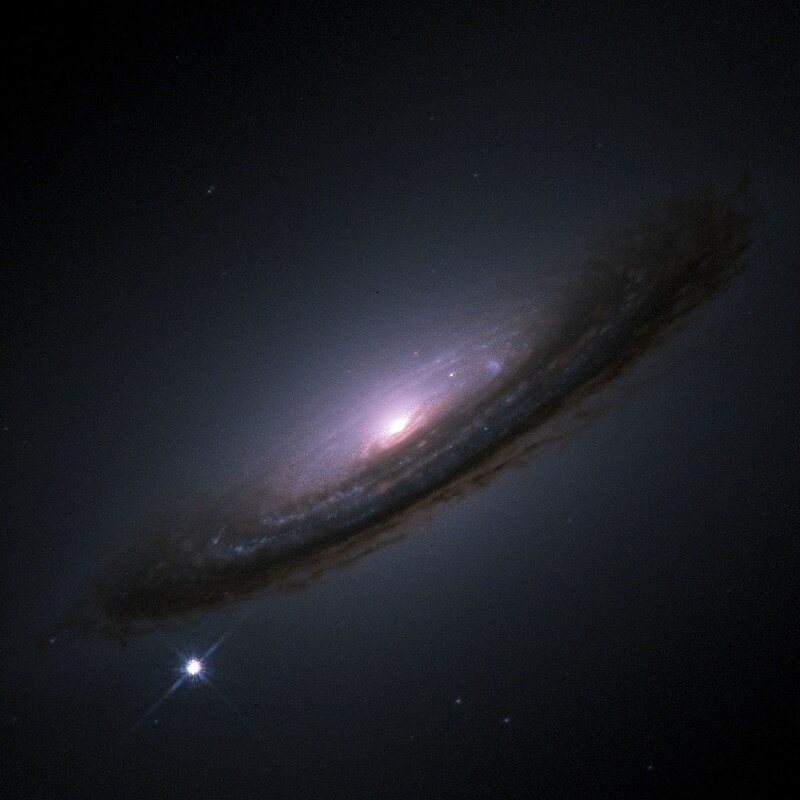Ever wondered how scientists know the distance to planets, stars, galaxies? Or even better, how to measure the universe’s size and its expansion? Well, they certainly don’t have a giant ruler, but they have other tools — including “candles” and “ladders”.
The easiest way to measure things far from Earth is called parallax and was discovered by ancient scientists — not just the Greeks (who are usually responsible for discovering things), but several other ancient societies with knowledge of astronomy.
The idea is simple: if we look at a star in one part of the year, as we move around the Sun six months later, we will be seeing the angle relative to our orbit. With the triangle it forms, trigonometry will do the job well in finding the distance to the star.
But what happens when the distance is so big, no matter how we move around the Sun that the angles don’t seem to be helping and it’s impossible to make a triangle with them? How is it possible to see the big picture, the universe expanding forever? For that, we will need optics, Henrietta Leavitt’s level of patience, and explosions.
The one with the Pink Floyd album cover
Nothing we know today about the universe would be possible without the work of Joseph von Fraunhofer. And he wasn’t an astronomer, he was what we would call today an experimental physicist specialized in optics. In 1814, he invented the spectroscope, an instrument capable of telling us the chemical composition of faraway objects, as well as their temperature, and distance.
Fraunhofer noticed that looking at a ray of sunlight through a prism doesn’t just get you a Pink Floyd’s Dark Side of the Moon prism effect, but also a strange pattern of black lines among the rainbow. These lines are the so-called Fraunhofer lines, and two other famous researchers (Robert Wilhelm Bunsen and Gustav Kirchhof) discovered that they represent the energy absorption by a chemical.

This invention changes everything for astronomy. With a spectrograph, scientists can know if an object is moving to or away from us. Usually, a particular chemical measured in a lab has its black lines well placed, but if something is moving away, the lines are shifted to red. When moving towards us, the lines shift to blue — the so-called Doppler Effect.

But this is just the beginning — and this is where things start to get very interesting.
Cepheid variables
In 1907, Henrietta Swan Leavitt discovered 1777 variables stars, 47 of which she meticulously classified as cepheid variable stars. The cepheids are stars that blink and inflates/deflates, their oscillatory pattern varies from 2 to 50 days – for classical cepheids, this makes them what scientists call a standard candle, objects that have the same pattern concerning their luminosities.

Leavitt noticed that the brighter the cepheid, the longer were their inflating/deflating period. In 1912 alone, she confirmed the relation using 25 cepheids, a relation which is today named Leavitt’s Law.
This is useful because astronomers could estimate the distances to them. It works like this: imagine a light bulb, if it is close to you it seems pretty bright, but from a distance it’s dim. Harlow Shapley used the law to measure the size of our galaxy, he estimated it has 300,000 light-years in diameter – today we know it is possibly 170,000 light-years.
Redshifting galaxies
It’s not just starts that are moving to or from us — it’s galaxies too.
American Astronomer Vesto Slipher worked in the Lowell Observatory in Arizona. Almost a century ago, he collected data from 41 galaxies – back then they were called nebulas because astronomers didn’t know exactly what they were. His findings were all the more intriguing as most of the galaxies had their spectrum shifted to red, meaning going to longer wavelengths. Only four of those galaxies were blueshifted, coming towards us.
One of the galaxies moving in our direction is the Andromeda galaxy, and we didn’t know it was coming to us until then. With the help of the Hubble Space Telescope, we know with accuracy how fast it’s moving, 110 km/sec ( 68.35 miles/sec). In 4 billion years it will collide with the Milky Way.
The universe itself expands
But the weirdest discovery came from two independent observations: one in Belgium in 1927 by George Lemaître and the other in 1929 by Edwin Hubble. The two discovered that the farther a galaxy was, the higher its redshift also was. In other words, things that are the most far away from us also seem to be moving farther away from us. There’s only one reasonable explanation for this, based on what we know: the universe itself is expanding.
Turns out, not only is the universe expanding, but it’s expanding faster and faster. With the data collected, the two astronomers concluded that there was a relation between the velocity (v) of the galaxies and their distances (D) as simplified by an equation: v=H0D.
This is called the Hubble-Lemaître’s law. ‘H0’ is the Hubble constant, the rate at which the universe expands per distance.
The value Hubble found was 500 (km/s)/Mpc (160 km/sec per million-light-years) and Lemaître’s 625 (km/s)/Mpc (160 km/sec per million-light-years) — but there is still a lot of ongoing research and controversy regarding these values.
Supernovae
There is a kind of supernovae suitable for measuring distances: the Type Ia supernovae. They are formed by the accretion of matter in a binary system, a white dwarf swallows a companion.
White dwarfs have about 1.4 solar masses, though they sometimes absorb their neighbors, which allows them to trespass the 1.4 limit, producing an amount of light common to all Type Ia supernovae. The accretion makes the supernova explosion so violent the brightness can outshine its own hosting galaxy.
Knowing how their luminosity changes with time just after the explosion, scientists can use these objects as standard candles and estimate distances.
In 1998, two independent teams the Supernova Cosmology Project and the High-z Supernova Search Team discovered that the universe’s expansion is accelerating using Type Ia supernovae. The scientists involved were expecting the opposite, they were looking for evidence that the universe’s expansion was slowing down. This result changed everything for cosmology — we now know there is a mysterious component called dark energy that dominates the universe’s composition, making it expand farther and farther. Roughly 68.3% of the universe today is made of dark energy, 26.8% is made of dark matter and the rest is regular matter — what makes planets exist and you reading/hearing this text.

Cosmic distance ladder
The final method incorporates almost all the other methods; this is what the SH0ES team did, for instance. They got the cepheids, supernovae that were measured with the cepheids technique, and supernovae in the standard approach. So they constructed a cosmic ladder, going from the closest distances to the most remotes they could measure. The result was a value very different from what Edwin Hubble found: 73.24 (km/s)/Mpc with a small error.
Other methods, less direct than the presented here, can estimate H0, such as the Cosmic Microwave Background (CMB), standard sirens, and the Baryon Acoustic Oscillations (BAO). They give different values of H0, a hot debate in cosmology today.
Throughout history, we’ve managed to get distances with high school trigonometry and sophisticated everything as optics became a mother to quantum mechanics. In the end, you can’t measure expansion without distances, a challenging thing when the universe is expanding forever, but the race for precision must never stop, who knows what the next method will bring us.






